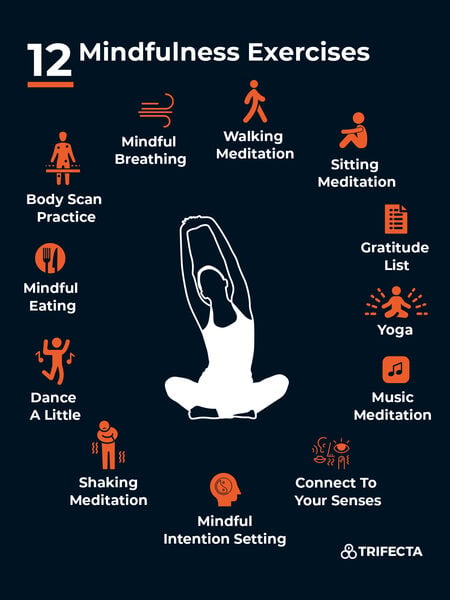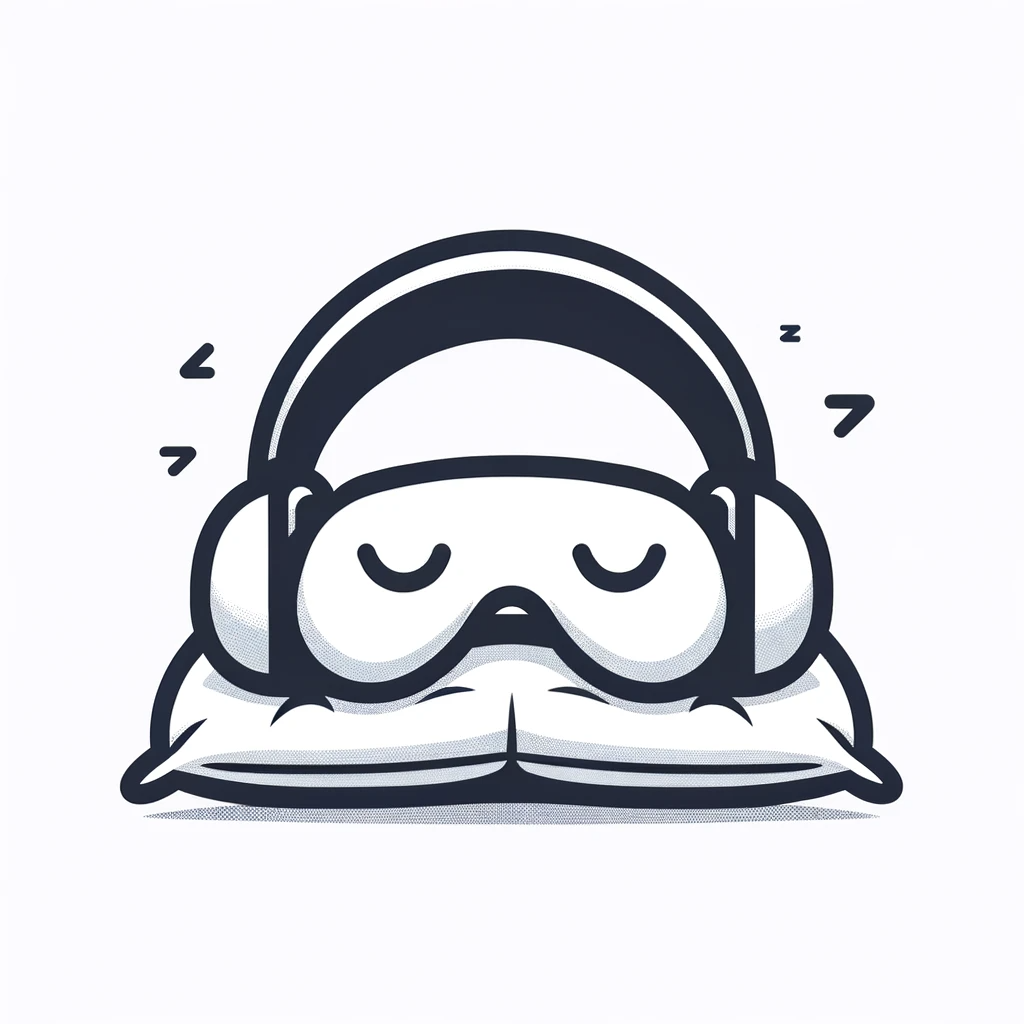
Breathe Your Way to Calm: Mindful Breathing Techniques for Mind-Body Balance
Written: Editor | August 25, 2023

Diaphragmatic Breathing
1. Understanding Diaphragmatic Breathing
When it comes to mindfulness and relaxation techniques, diaphragmatic breathing is a powerful tool that can help you achieve a state of calm and balance. Also known as deep belly breathing or abdominal breathing, diaphragmatic breathing involves consciously engaging your diaphragm – a dome-shaped muscle located just below your ribcage – to promote a more efficient and relaxed breathing pattern.
2. Steps to Practice Diaphragmatic Breathing
To practice diaphragmatic breathing, follow these steps:
- Find a comfortable and quiet place to sit or lie down.
- Close your eyes and take a moment to relax your body and clear your mind.
- Place one hand on your chest and the other hand on your abdomen, just below your ribcage.
- Take a slow, deep breath in through your nose, allowing your abdomen to expand as you fill your lungs with air.
- Pause for a moment, then slowly exhale through your mouth, gently contracting your abdominal muscles to release the air.
- Continue this deep breathing pattern, focusing on the rise and fall of your abdomen with each breath.
3. Benefits of Diaphragmatic Breathing
Practicing diaphragmatic breathing regularly can offer a range of benefits, including:
- Reduced stress and anxiety: Deep belly breathing activates the body's relaxation response, helping to calm the mind, reduce tension, and alleviate stress and anxiety.
- Improved focus and mental clarity: By shifting the focus to your breath, diaphragmatic breathing can help enhance concentration, improve cognitive function, and promote mental clarity.
- Enhanced respiratory function: By engaging the diaphragm, this technique strengthens and stretches the lungs, promoting better oxygen exchange and improving overall respiratory function.
- Lowered blood pressure: Deep breathing has been shown to lower blood pressure by promoting relaxation and reducing the body's stress response.
- Increased mindfulness and present-moment awareness: Diaphragmatic breathing brings your attention into the present moment, allowing you to cultivate mindfulness and become more attuned to your body and surroundings.
Incorporating diaphragmatic breathing into your daily routine can help you better manage stress, increase your overall well-being, and cultivate a greater sense of mindfulness and tranquility. So, take a few moments each day to practice this simple yet powerful breathing technique and reap the benefits it has to offer.

Box Breathing
1. Introduction to Box Breathing
If you're feeling stressed, overwhelmed, or simply need a moment to pause and reset, box breathing is a powerful technique that can help you find calm and focus. Originating from ancient yogic practices, box breathing is a simple yet effective mindfulness exercise that involves controlling your breath in a specific pattern.
2. How to Practice Box Breathing
To practice box breathing, follow these four steps:
-
Inhale: Begin by taking a slow, deep breath through your nose. Imagine drawing the breath into your abdomen, then your chest. Inhale for a count of four, allowing your lungs to fill with air.
-
Hold: After the inhalation, hold your breath for a count of four. Keep your breathing relaxed and comfortable during this pause.
-
Exhale: Slowly exhale through your mouth for a count of four, releasing the breath from your chest first, then your abdomen. Focus on emptying your lungs completely.
-
Hold: Once you have fully exhaled, hold your breath for another count of four. Maintain a calm and relaxed state during this holding phase.
Repeat these four steps several times, aiming for a total of four to six rounds. As you become more comfortable with the technique, you can increase the duration of each count to further deepen your breathing and relaxation.
3. Benefits of Box Breathing
Box breathing offers numerous benefits for both your mental and physical well-being, including:
-
Stress reduction: By focusing on your breath and engaging in intentional deep breathing, box breathing helps activate the body's relaxation response, reducing feelings of stress and anxiety.
-
Improved focus and concentration: This breathing technique enhances your ability to concentrate by directing your attention to the present moment, increasing mindfulness and mental clarity.
-
Enhanced performance: Box breathing has been used by athletes, performers, and professionals to enhance their performance under pressure. It can help regulate heart rate, improve oxygenation, and increase calmness and confidence.
-
Lowered blood pressure: Practicing box breathing regularly can help lower blood pressure levels over time, leading to improved cardiovascular health.
-
Better sleep: Box breathing can be an effective tool for promoting relaxation and improving sleep quality. Establishing a box breathing routine before bed can help calm the mind and prepare the body for restful sleep.
Incorporating box breathing into your daily routine can provide you with a powerful tool for managing stress, improving focus, and enhancing overall well-being. Whether you take a few minutes during the day to practice or use it during specific situations when you need to calm your mind, box breathing can support you in finding balance and tranquility in the midst of life's challenges.

4-7-8 Breathing Technique
1. What is the 4-7-8 Breathing Technique
The 4-7-8 breathing technique, also known as the relaxation breath, is a simple and effective mindfulness practice that can help you manage stress and promote relaxation. It involves inhaling for a count of 4, holding the breath for a count of 7, and exhaling for a count of 8. This technique is based on the ancient Indian yogic practice called pranayama, which focuses on controlling and regulating the breath to calm the mind and body.
2. Steps to Practice the 4-7-8 Breathing Technique
To practice the 4-7-8 breathing technique, follow these steps:
- Find a quiet and comfortable place to sit or lie down.
- Close your eyes and relax your body.
- Take a deep breath in through your nose for a count of 4. Fill your belly with air.
- Hold your breath for a count of 7.
- Slowly exhale through your mouth for a count of 8, making a whooshing sound as you release the air.
- Repeat this cycle three more times, for a total of four breaths.
3. Benefits of the 4-7-8 Breathing Technique
The 4-7-8 breathing technique offers several benefits:
- Stress reduction: Practicing this technique can help activate the body's relaxation response, reducing the effects of stress and anxiety.
- Improved sleep: The 4-7-8 breathing technique can be used as a calming bedtime routine to promote better sleep.
- Enhanced focus: By focusing on your breath, you can quiet your mind and improve concentration.
- Emotional regulation: Mindful breathing can help regulate emotions, allowing you to respond to situations with greater clarity and calmness.
- Lowered blood pressure: Deep, slow breathing can help lower blood pressure and promote cardiovascular health.
- Improved lung function: Practicing deep breathing exercises regularly can improve lung capacity and oxygen intake.
Incorporating the 4-7-8 breathing technique into your daily routine can have a positive impact on your overall well-being. Remember to start slowly and gradually increase the duration of each breath cycle as you become more comfortable with the technique.
Whether you are feeling stressed, anxious, or simply looking to enhance your mindfulness practice, the 4-7-8 breathing technique offers a quick and accessible tool to promote relaxation and well-being. Give it a try and experience the benefits for yourself.

Conclusion
Incorporating mindful breathing techniques into your daily life can have a significant impact on your well-being. By practicing these techniques, you can reduce stress, improve focus, and enhance your overall mental and physical health. Remember to start small and gradually build up your practice. Experiment with different techniques to find the one that resonates with you the most. And if you have any questions, refer to the frequently asked questions section for further clarification. So take a deep breath, exhale, and embrace the power of mindful breathing.
1. Incorporating Mindful Breathing into Daily Life
Practicing mindful breathing doesn't have to be a time-consuming activity. You can incorporate it into your daily routine in simple ways. Start by taking a few moments each morning to focus on your breath before starting your day. Throughout the day, whenever you feel stressed or overwhelmed, take a pause and bring your attention back to your breath. You can also integrate mindful breathing into activities like walking, eating, or even while waiting in line. Remember, consistency is key. Gradually increase the duration of your breathwork sessions to experience deeper and longer-lasting benefits.
2. Selecting the Right Technique for You
There are several mindful breathing techniques to choose from, so you can find the one that suits you best. Some popular techniques include:
- Box breathing: Inhale, hold, exhale, and hold for equal counts.
- Diaphragmatic breathing: Focus on breathing deeply into your abdomen, expanding your diaphragm.
- Counting breaths: Inhale to a specific count, hold briefly, and exhale to the same count.
- 4-7-8 breathing: Inhale for four counts, hold for seven counts, and exhale for eight counts.
Experiment with different techniques to see which one resonates with you the most. You may find that certain techniques work better for relaxation, while others are more energizing. Listen to your body and choose the technique that helps you achieve your desired state of mind.
3. Frequently Asked Questions about Mindful Breathing Techniques
Q: How long should I practice mindful breathing each day?
A: Start with just a few minutes a day and gradually increase the duration as you become more comfortable. Aim for at least 10-15 minutes of mindful breathing each day to experience its full benefits.
Q: Can mindful breathing help with anxiety?
A: Yes, mindful breathing can be a powerful tool for managing anxiety. By focusing on your breath, you can calm your nervous system and reduce anxiety symptoms.
Q: Is there a best time of day to practice mindful breathing?A: There is no definitive answer to this question. Some people prefer to practice in the morning to start their day on a calm note, while others find it helpful to practice in the evening to unwind before bed. Choose a time that works best for you and fits into your daily routine.
Q: Can I practice mindful breathing while doing other activities?A: Absolutely! Mindful breathing can be incorporated into various activities, such as walking, eating, or even doing household chores. The key is to bring your attention to your breath and be fully present in the moment.
Remember, mindful breathing is a practice that requires patience and consistency. With time and dedication, you can harness the power of your breath to cultivate inner peace and improve your overall



